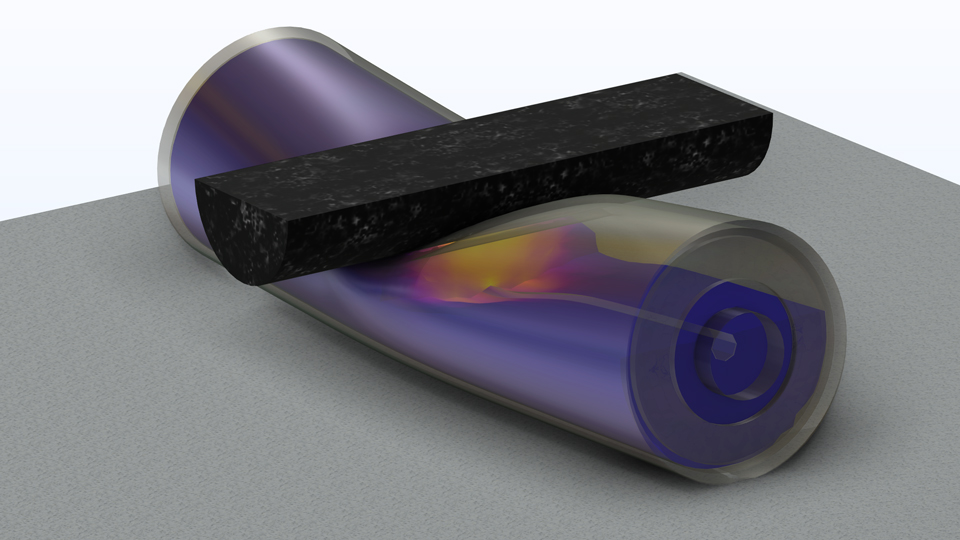Geomechanics Module Updates
For users of the Geomechanics Module, COMSOL Multiphysics® version 6.4 introduces an improved formulation for material models and phase-field damage modeling for explicit dynamics, along with a new feature that enables faster computation of inelastic strains. Learn more about these updates below.
Improvements to Material Models
For the Linear Elastic Material feature, the Soil Plasticity, Concrete, and Damage attributes have a new framework that provides significant improvements in computational speed and memory usage. This functionality is based on a new formulation that makes it possible to use these attributes in explicit dynamics analyses. Additionally, the Elastoplastic Soil feature has also been updated to produce significant improvements in computational speed and robustness.
Nonlinear Material Models for Explicit Dynamics
To improve efficiency in time-explicit analysis, the material models for hyperelasticity, plasticity, creep, and viscoplasticity have been revised. These enhancements also deliver significant performance gains in other types of studies.

New Phase-Field Damage, Explicit Dynamics Multiphysics Interface
To model the evolution of damage and cracks in solids under dynamic conditions, the new Phase-Field Damage, Explicit Dynamics multiphysics interface combines the Solid Mechanics, Explicit Dynamics interface with the Phase Field in Solids interface through a Phase-Field Damage bidirectional multiphysics coupling.
Dynamic fracture of a brittle material analyzed using the AT1 phase-field damage model and explicit dynamics.
Hencky Strain Decomposition
The new Logarithmic (Hencky) strain decomposition option enables faster computation of inelastic strains when compared to the traditional multiplicative decomposition. For instance, plasticity algorithms run significantly faster with this approach.
A metallic pipe is squeezed between two stiff indenters until it is almost flat.

